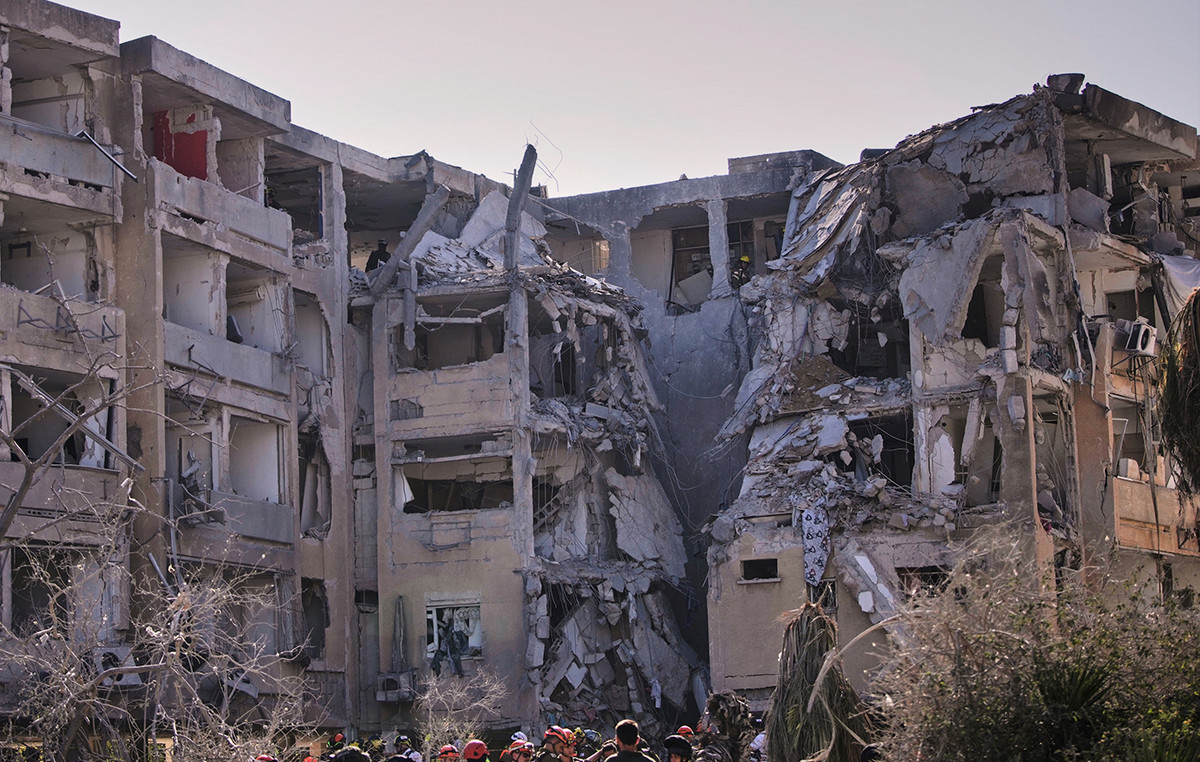Three of the four astronauts who were unexpectedly hospitalized after returning from the International Space Station in late October discussed the mission SpaceX Crew-8 during a NASA press conference this Friday (8). The trio revealed some anecdotes about the trials of readjusting to life on Earth after spending more than 230 days in space.
Astronauts have remained tight-lipped about the nature of the medical problem that left an undisclosed crew member hospitalized overnight. But they did discuss some of the symptoms they experienced while readjusting to life under the effects of gravity.
“I’m a first-time pilot and I’m fascinated by the readaptation,” said NASA astronaut Matthew Dominick, who served as mission commander.
“The big things you expect — being disoriented, being dizzy. But the little things, like just sitting on a hard chair… My back hasn’t sat on something hard in [235] days.”
Dominick added that he was recently sitting outside with his family, eating dinner, and was forced to lie down on a towel in the backyard to continue participating in the conversation because his seat was so uncomfortable.
“That wasn’t in a book I read,” Dominick joked. “Hey, you’re going to space. It will be difficult to sit on a hard chair.”
Dominick and fellow NASA astronauts Michael Barratt and Jeanette Epps answered questions Friday, while their fourth crewmate, Russian cosmonaut Alexander Grebenkin, “did not participate due to his travel schedule,” according to a press release. from NASA
Barratt, Dominick, Epps and Grebenkin spent 235 days in space before returning to Earth with a landing off the coast of Florida aboard a SpaceX Crew Dragon capsule on October 25.
The SpaceX capsule “performed a normal entry and landing,” according to NASA, and all four crew members could be seen smiling and waving as they exited the vehicle aboard a recovery ship.
Hours later, however, NASA revealed that the entire crew had been taken to a nearby hospital — Ascension Sacred Heart Pensacola — “out of an abundance of caution.”
The space agency later revealed that one of the astronauts had a medical issue and remained in the hospital overnight.
NASA did not reveal which astronaut remained hospitalized, nor did the space agency share details about the medical issue, saying in a statement only that the crew member was “in stable condition” and “under observation as a precautionary measure.”
The three NASA astronauts repeatedly refused to comment on the matter on Friday.
“In the fullness of time we will allow this to be released and documented for now, medical privacy is very important to us,” said Barratt, a doctor and veteran astronaut who piloted the Crew-8 mission. “Medical privacy and the lawsuits we have going on now negate our ability to (discuss the issue).”
Medical check-outs are routine after long-duration missions in space. However, astronauts are typically transported directly back to their home base in Houston after their dive, rather than being diverted to a nearby hospital for reconditioning while they transition back to the Earth environment.
Impact of the Boeing Starliner on the return of Crew-8
The Crew-8 astronauts were launched into space on March 3 and remained in space longer than expected.
Among the obstacles to their return to Earth were schedule changes related to problems with the Boeing Starliner spacecraft, which carried NASA astronauts Butch Wilmore and Suni Williams to the space station on a test flight in early June but was considered too much trouble. risky to return his crew to Earth.
NASA ultimately decided to send back the empty Boeing spacecraft and moved the Starliner astronauts to the SpaceX Crew-9 mission, delaying the launch of that mission. This schedule adjustment, in turn, delayed Crew-8’s return because Crew-9 had to arrive at the orbital laboratory for a handoff before Crew-8 could disembark.
Weather delays also pushed Crew-8’s return to late October.
Although the 235-day mission lasted a few weeks longer than routine trips to the orbiting outpost, it was not a record stay in space for the astronauts.
Astronauts often extend their stay aboard the space station by days, weeks, or even months as unexpected events arise.
NASA astronaut Frank Rubio, for example, logged a record 371 days in space during a mission that concluded in September 2023. Rubio’s stay was extended after his original trip to low Earth orbit — a Russian Soyuz capsule — developed a refrigerant leak while docked at the space station.
Porphyry: the black hole that created a structure larger than the Milky Way
This content was originally published in NASA Astronauts about readjusting to life on Earth: “Difficult to sit” on the CNN Brasil website.
Source: CNN Brasil
Charles Grill is a tech-savvy writer with over 3 years of experience in the field. He writes on a variety of technology-related topics and has a strong focus on the latest advancements in the industry. He is connected with several online news websites and is currently contributing to a technology-focused platform.







